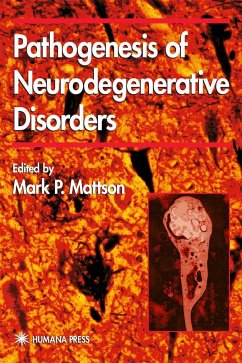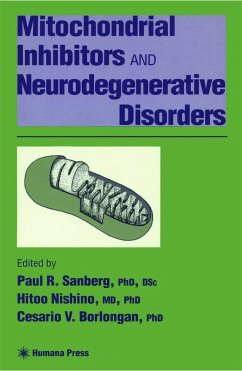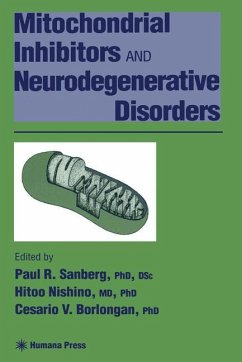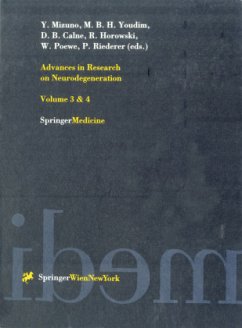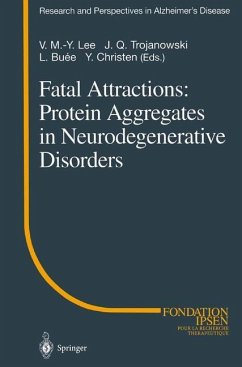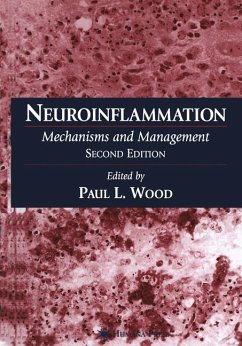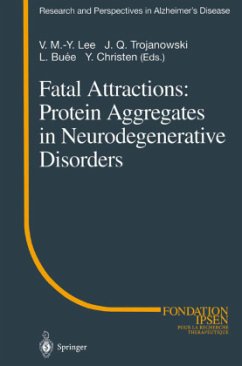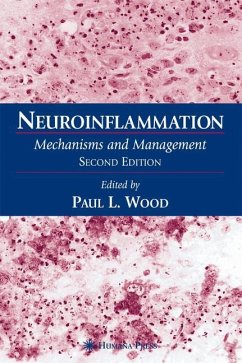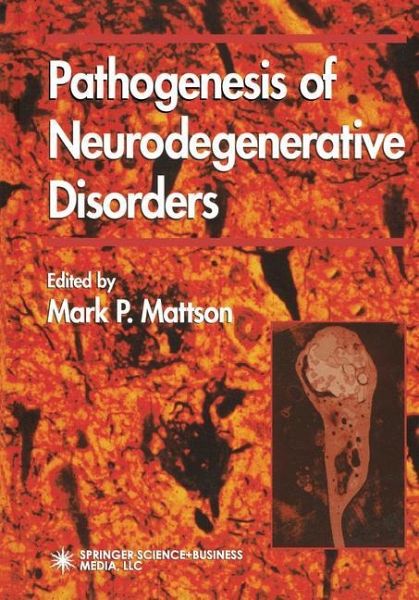
Pathogenesis of Neurodegenerative Disorders
Versandkostenfrei!
Versandfertig in 6-10 Tagen
151,99 €
inkl. MwSt.

PAYBACK Punkte
76 °P sammeln!
As the average life expectancy of many populations throughout the world increases, so to does the incidence of such age-related neurodegenerative disorders as Alzheimer's, Parkinson's, and Huntington's diseases. Rapid advances in our understanding of the molecular genetics and environmental factors that either cause or increase risk for age-related neurodegenerative disor ders have been made in the past decade. The ability to evaluate, at the cellular and molecular level, abnormalities in postmortem brain tissue from patients, when taken together with the development of valuable animal and cel...
As the average life expectancy of many populations throughout the world increases, so to does the incidence of such age-related neurodegenerative disorders as Alzheimer's, Parkinson's, and Huntington's diseases. Rapid advances in our understanding of the molecular genetics and environmental factors that either cause or increase risk for age-related neurodegenerative disor ders have been made in the past decade. The ability to evaluate, at the cellular and molecular level, abnormalities in postmortem brain tissue from patients, when taken together with the development of valuable animal and cell-culture models of neurodegenerative disorders has allowed the identification of sequences of events within neurons that result in their demise in specific neurodegenerative disorders. Though the genetic and environmental factors that pro mote neurodegeneration may differ among disorders, shared biochemical cascades that will ultimately lead to the death of neurons have been identified. These cascades involve oxyradical production, aberrant regulation of cellular ion homeostasis and activation of a stereotyped sequence of events involving mitochondrial dysfunction and activa tion of specific proteases. Pathogenesis of Neurodegenerative Disorders provides a timely compilation of articles that encompasses fundamental mechanisms involved in neurodegenerative disorders. In addition, mechanisms that may prevent age-related neurodegenerative disorders are presented. Each chapter is written by an expert in the particular neurodegenerative disorder or mechanism or neuronal death discussed.





